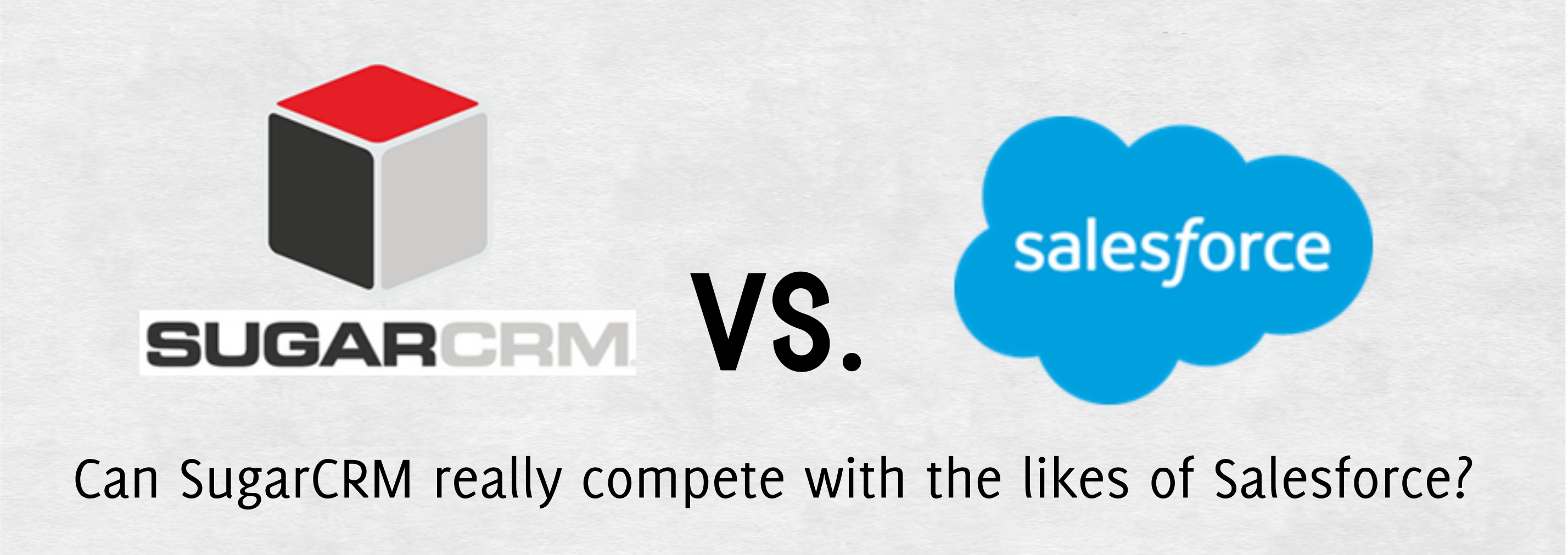One of the most searched terms relating to CRM software is the term, “free CRM”. In fact, free CRM is searched nearly 44,000 times per month. What we assume most businesses are looking for here is a free CRM software solution that will allow them to functionally and technically solve some their customer relationship management issues. Unfortunately, this approach of starting with a product, rather than a solution, can lead to more problems in the long run. What’s more, many business lock on to a CRM that may be initially offered to them at no cost; however as the business and it’s data grow the CRM begins to accrue cost. This seems like a good plan, until you recognize that this may not ultimately be the best solution for your business. This week we’re looking at SugarCRM, one of the most popular of these types of application to see just who it fits, and who it doesn’t.
What’s the deal with SugarCRM?
So, is this Sugar CRM system really free? You may find yourself asking this question of a company with nearly $36 million in annual revenue, 20 consecutive quarters of growth, and 29 percent year-over-year increase in annual recurring revenue.
Starting in 2004, SugarCRM brought to market an easy to use, open source customer relationship management software for sales and marketing professionals and businesses as a free CRM. The tool provided companies the ability to analyze sales and marketing campaigns, data reporting, lead generation, email marketing, and social media integration.
But as of the late, the company has modified its business model to compete with the likes of Salesforce, Oracle and SAP. The foundation for their new direction was to phase out the free CRM model and instead provide businesses with the enterprise tool at a competitive monthly licensing fee.
In a recent update to a year old statement, SugarCRM expressed no plans to upgrade their choice open-source forum, Sugar Community Edition CRM – widely popular among developers and first time CRM business users. The company has since removed the open source model for developers and rendered a more user-friendly, straight forward business CRM integrated with clearly defined suites.

How does SugarCRM stack up?
Yet, by comparison, SugarCRM’s offerings hardly stack up to the capabilities Salesforce or Microsoft Dynamics CRM present for nearly the same price. For the growing business, novice user, or self-taught developer the misconception could lead to financial burden later as needs for greater functionality become more apparent.
The company’s revenues are driven by a lucrative business model which offers three separate licensing packages with attractive pricing. However, buyer-beware the truths inside each package. If the investor compared SugarCRM to Salesforce or Microsoft CRM, they would see the capability limitations and absent service obligation included in two out of three of the packages. The business model pushes novice CRM users to invest in the cheapest license, adopt it, and then struggle to make it do what users need it to. Investors then are generally pushed to invest in a higher priced package, and also, additional licenses for application integrations they may need for more support.
Ultimately, months of sunk costs and user frustration can be easily avoided when investors are knowing of the breadth of functionality they’ll need to support their front office needs. By the time the money is spent on SugarCRM new licenses and continuous additives, the investor should have considered Salesforce or Microsoft CRM – two of the market’s leading CRM providers. Those two programs also provide enough functionality for nearly the same price in their base package as SugarCRM does in its more elite bundles.
The bottom line
Overall, SugarCRM has grown to compete on a global stage with it’s evolving software, and has proven itself — if for no other reason — due to it’s large user base. It’s a great fit for new and small businesses that don’t plan on rapid expansion, or changing customer dynamics. However, growing businesses may want to consider alternative solutions; given SugarCRM’s reformed business model. It simply implies too much risk on a company’s investment and growth model to throw capital dollars at an asset they’ll simply grow out of in a short amount of time. Additionally, the company could have gone with Salesforce or Microsoft Dynamics for the same price by the time all is said and done, and both of those system simply offer greater functionality and package flexibility.
Evolving from a basic CRM license package to better one is never a bad thing. In fact, it shows upside to the business. The issue becomes a matter of timing. How long will it take before the company takes off? SugarCRM cannot support a rapid or gradual growth, because each opportunity requires specific attention. Given the capabilities of SugarCRM’s packages, companies may not have it when they need it. Those needs could have equally been met with Salesforce or Microsoft Dynamics for the price you paid, and will continue to pay. So, determining which is the best fit for your company is all dependent on your forecasted growth.
Datix is a certified Salesforce and Microsoft Dynamics CRM partner. We help firms every day. If you found this helpful, we’d love to help you further with any Salesforce or Microsoft Dynamics projects you have coming up.
Is your firm being held back due to a disparate CRM? Are problems occurring for reasons unknown? Join the conversation and share your CRM implementation needs and experiences with us.


